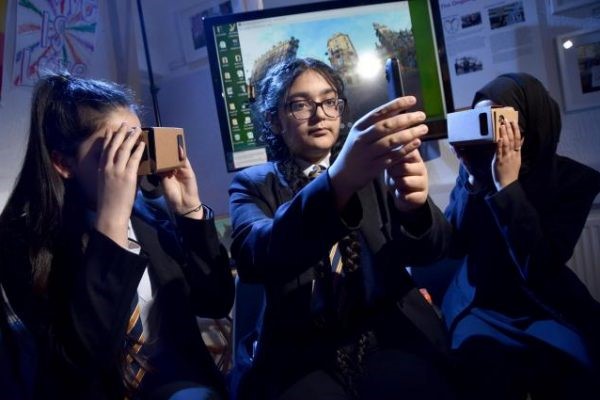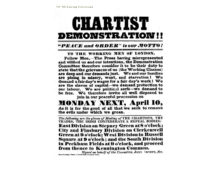How to create a virtual march through time
This activity is suitable for students aged 10 – 16+
The Age of Revolution was a time of extraordinary activism and protest. From the American, French and Haitain revolutions, which transformed entire nations, to Peterloo, the Luddites, the abolition of transatlantic slavery and more, people from all walks of chose to rise up and campaign for change.
Creating a virtual ‘march through time’ is a great way for students to explore some of these events and the people associated with them, as well as learning about chronology and connections within the period, and making links with their lives today.
The IT Partnering and Innovation team at Lancaster University worked with Key Stage 3 pupils from Grange School in Bradford and the Peace Museum to create a virtual women’s march through time. Find out more about their project here.

1. Inspiration
Begin by asking students to list current issues that they feel strongly about – climate change, the gender pay gap or racial equality for example, or something more local. Discuss their choices and ways they might raise awareness or protest for a particular cause.
Use our Revolutionary Collection of objects and images to help students explore some of the ways people protested in the past. The objects have been divided into themes to help you find those most relevant to your chosen topic. The following are just some of the many objects relating to protest and activism:
- Peterloo banner
- Mary Wollstonecraft
- Pussyhat
- Anti-slavery sugar bowl
- Liberty cap
- Luddite ticket
- Red flag
Use the activities and guides in our In the Classroom section to help students explore these objects further.
Consider visiting a Museum or using Museum websites to further extend students’ research. The students working with Lancaster University visited the Peace Museum. The project produced on the Remembering Resistance website focuses particularly on women’s resistance.
2. Generating ideas
Working individually, in pairs or in small groups, students select an image of an object or person related to their theme. They continue their research and distil this into a ‘blurb’ to accompany their image, which is a maximum of 100 words long (hint: they could try making a list of the most important points to include first).
As an extension, students could devise a peaceful protest activity inspired by their chosen image, such as designing their own banner, launching a petition or social media campaign.

Portrait of Mary Wollstonecraft © National Portrait Gallery, London

Pussyhat, Image courtesy of Francis Mariani, via Flickr under CC BY-NC-ND 2.0
3. Creating
Working as a whole class, students must then decide on how their images (and activities) will be organised and presented – in date order, by topic..? Links can be added so that users can jump between pages and make different connections.
This could be done simply by uploading each image and blurb into a class Powerpoint or Presi (like the one created for the Remembering Resistance project).
Or by using a simple website builder such as www.weebly.com
Or you could use 3D photography and a Virtual Reality builder, such as Kuula, Marzipano or Vortals to create your march through time – like the one created by the Lancaster University project here.


